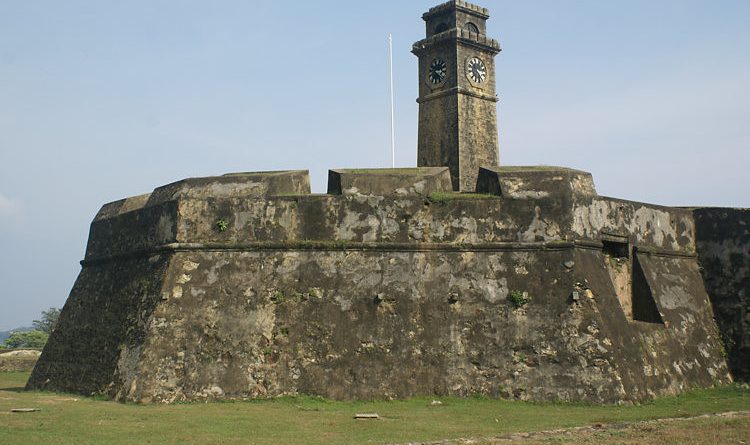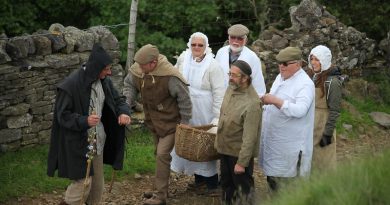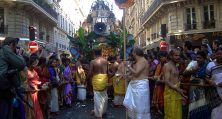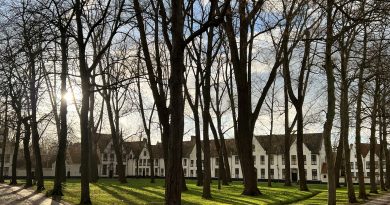Galle Fort: Where Europe met Asia
Galle Fort in the Bay of Galle on the southwest coast of Sri Lanka, was built first in 1588 by the Portuguese, then extensively fortified by the Dutch during the 17th century from 1649 onwards.
It is a historical, archaeological and architectural heritage monument, which even after more than 437 years maintains a polished appearance, due to extensive reconstruction work done by the Archaeological Department of Sri Lanka.
The fort has a colourful history, and today has a multi-ethnic and multi-religious population.The Sri Lankan government and many Dutch people who still own some of the properties inside the fort are looking at making this one of the modern wonders of the world.The heritage value of the fort has been recognized by UNESCO for its unique exposition of “an urban ensemble which illustrates the interaction of European architecture and South Asian traditions from the 16th to the 19th centuries.”
The Galle Fort, also known as the Dutch Fort or the “Ramparts of Galle”, withstood the Boxing Day tsunami of 2004 which damaged part of coastal area Galle town. It has since been restored.
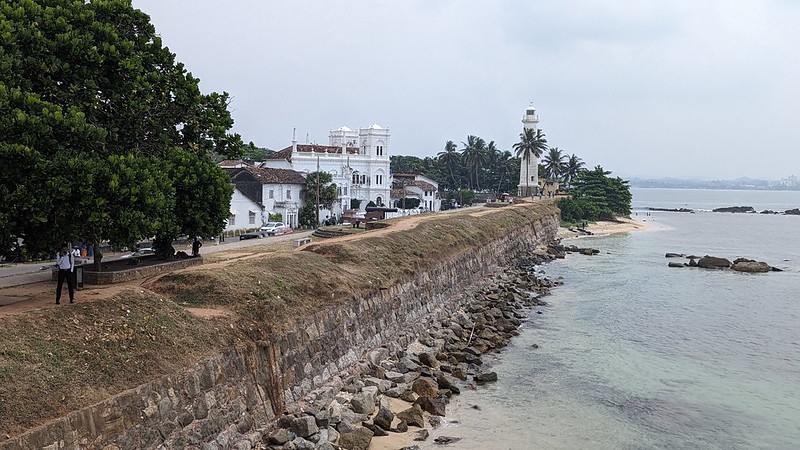
Founded in the 16th century by the Portuguese as a fortified town, Galle reached the height of its development in the 18th century under Dutch colonial rule. Its street grid represents the typical Dutch tradition of parcelling out blocks with the purpose of creating clusters of buildings within a limited area. Rows of houses with their narrow sides facing the streets and verandas shaded by high overhanging roofs supported on slender columns create distinctive streetscapes. These characteristics, along with internal courtyards, are among the adopted South Asian elements that create the settlement’s unique character.
Galle declined in importance after Colombo became the main port under the British who took control of Sri Lanka , then Ceylon, at the end of the 18th century . Its now a tourist hotspot with boutique hotels, and cafes, but about 400 families still live inside the fort today
The urban area within the fort not only has a rectangular grid pattern of streets full of low houses with gables and verandahs in the Dutch colonial style. It also has a well laid out road network with the peripheral roads aligned parallel to the fort’s ramparts.
The fort area has a number of historic churches, mosques, commercial and government buildings. Some of the locals stroll along the walls of the fort in the evenings.
Many buildings are of Dutch vintage with street names also in Dutch. The sewerage system built in the fort area ensured that the city sewerage was flushed into the sea during the tidal cycle. The Dutch exploited the musk rats in the sewers by exporting them to extract musk oil.
Street names
Most of the street names are a legacy from the colonial period, including Pedlar Street or ‘Moorse Kramerstraat’, the Moorish pedlar (or peddler) street, named after the Muslim moors who were retailers along with chettis; Lighthouse Street or ‘Zeeburgstraat’ or ‘Middelpuntstraat’ named after the lighthouse which was destroyed in a fire in 1936; Hospital Street, the location of the Dutch Hospital, the house of the Surgeon and the Medical Garden; Leyn Baan Street or ‘Leyenbahnstraat’, the Old Rope-Walk Street, where coir rope was made; Church Street, named after a church which was demolished in the 17th century and also the location of the Dutch Reformed Church and All Saints Church; Parawa Street, named after the Parawa migrants from South India who were fishermen and traders; and Chando Street named after the toddy tappers and Dutch Burghers who owned coconut gardens and small ark distilleries.
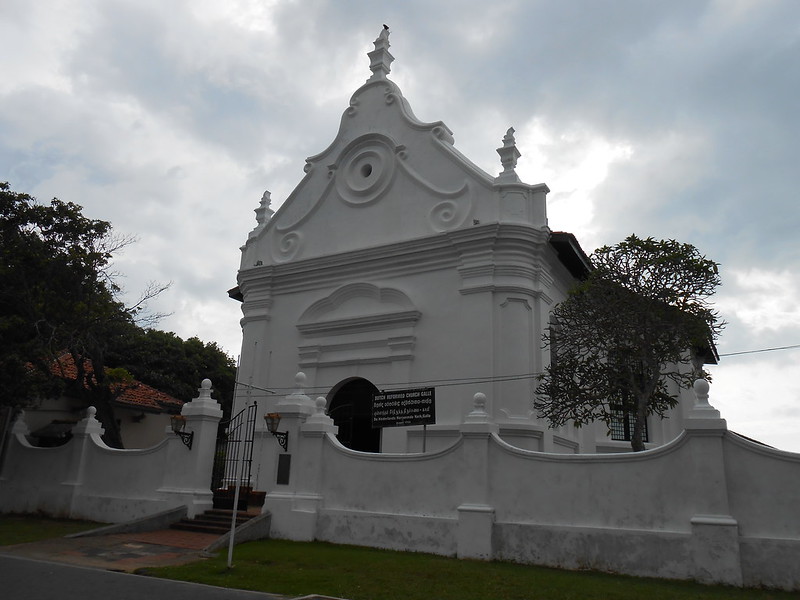
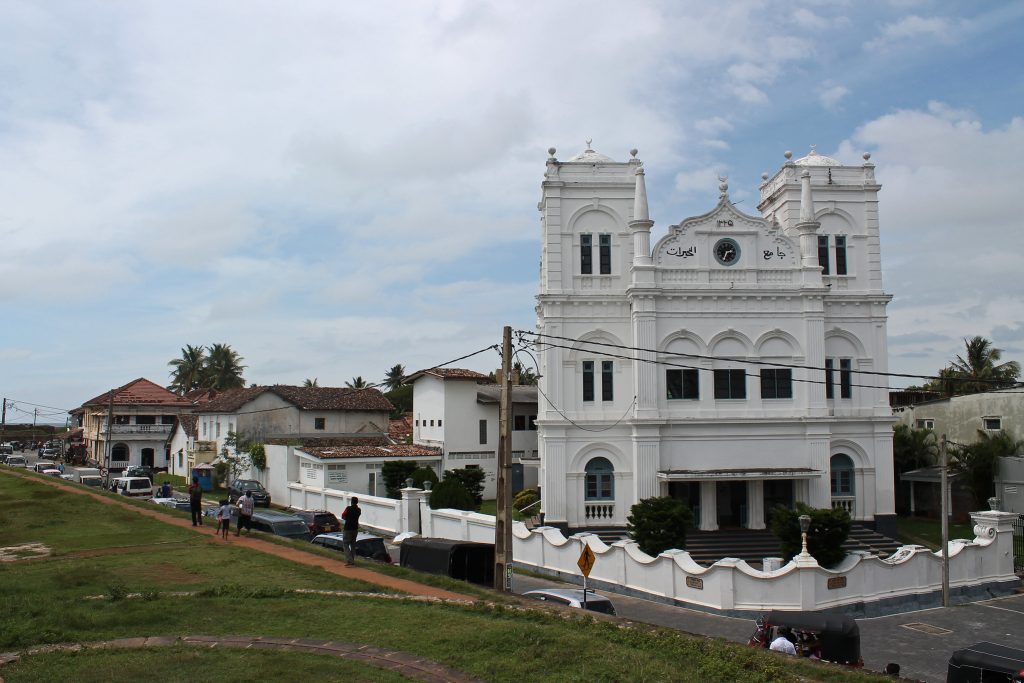
Landmarks
Groote Kerk (Dutch Reformed Church)
The Groote Kerk (Dutch Reformed Church) was built in 1640. However, it was remodeled between 1752 and 1755. The church is paved with grave stones from the old Dutch cemetery. There is an old organ of 1760 vintage in the church where services are held and a pulpit made of calamander wood from Malaysia is used.Its historic belfry, dated 1707 and cast in 1709, rang every hour
New Orient Hotel
The New Orient Hotel was originally built in 1694 for the exclusive use of the Dutch Governor and his staff. It was converted into a hotel in 1865, the New Orient Hotel, which catered to the European passengers traveling between Europe and Galle Port in the 19th centuryand in 2005 was modernised into a franchise of the Aman Resorts, named the Amangalla.
Breadfruit tree
The breadfruit tree was introduced in Galle first by the Dutch; reputedly the oldest breadfruit tree in Sri Lanka can be found at Akersloot Bastion in Galle Fort.It is believed that the Dutch introduced breadfruit which is of ‘heaty’ nature hoping that would either kill the local population or make them sick.However, the locals found a neutraliser to this in the coconut tree. They mixed breadfruit with coconut and evolved a delicacy, which became popular, as it was found tasty and nourishing. This tree is now grown across the country.
Other landmarks
Other landmarks are the old Dutch government house, the residence of the Commander, the great warehouse near the old gate, built around 1669 to store spices and ship equipment (which now houses the National Maritime Archaeology Museum), the Old Dutch Hospital, the Meeran Jumma Mosque, built in 1904, the Buddhist temple built at the site of the Portuguese Roman Catholic church, the All Saints Anglican Church built in 1871, the 1882 Clock Tower, the Clan House and the 1939 Galle Lighthouse.
Destinations: Sri Lanka/ Netherlands

